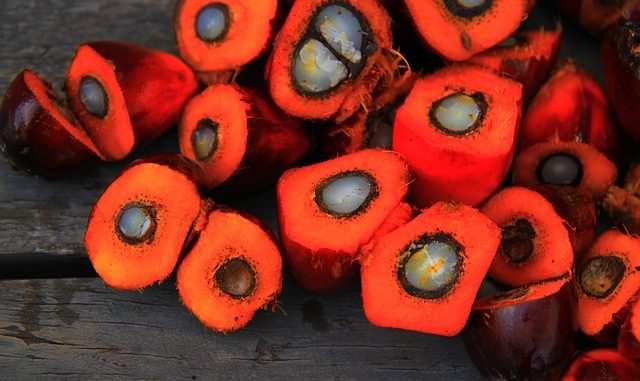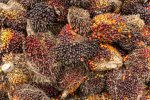Historical Context
The use of palm oil dates back centuries, with historical evidence suggesting its cultivation and consumption in regions such as West Africa and Southeast Asia. Indigenous communities traditionally extracted palm oil using manual methods, employing mortars and pestles to crush palm fruits. Over time, advancements in technology have transformed the extraction process into a more efficient and industrialized system.
Cultivation of Oil Palm
The first step in the production of red palm oil is the cultivation of the oil palm tree. Oil palm trees thrive in tropical climates and are primarily grown in countries within the equatorial belt. The cultivation process involves selecting suitable land, preparing the soil, and planting the oil palm seedlings. It takes approximately three to four years for the oil palm trees to mature and start producing fruit bunches.
Harvesting
The harvesting of oil palm fruit is a crucial step in the red palm oil production process. Oil palm trees yield fruit bunches that contain a mixture of ripe and unripe fruits. The harvesting process requires skilled workers who carefully cut the bunches from the trees to avoid damage. In modern industrialized plantations, mechanical harvesters may be employed to increase efficiency.
Threshing
After harvesting, the next step is the separation of the fruit from the bunch. Threshing is traditionally done manually, with workers using tools to remove the fruits from the bunches. However, in large-scale commercial operations, mechanical threshing machines are often employed to streamline the process. Threshing results in a mixture of palm fruit and other components, including the palm nuts.
Sterilization
To prevent the growth of microorganisms and enzymes that can affect the quality of the oil, the palm fruit must undergo a sterilization process. This step typically involves the use of steam. The fruits are placed in large vessels, and steam is applied to heat them. The high temperature helps to deactivate enzymes and kill bacteria, ensuring the oil extraction process is hygienic and the final product is safe for consumption.
Extraction of Palm Oil
The extraction of red palm oil from the sterilized fruit involves pressing or crushing the fruit to release the oil. Traditional methods involve the use of a hydraulic press or manually operated screw presses. In more modern and industrialized settings, expeller presses or continuous screw presses are commonly used. The goal is to separate the oil from the fibrous components of the fruit.
Clarification
The extracted crude palm oil is not yet suitable for consumption due to impurities and non-oil components. Clarification is the process of removing these impurities to obtain clear, high-quality oil. This is typically achieved through the use of centrifuges or settling tanks, allowing the heavier impurities to settle at the bottom. The clarified oil, which is now a reddish-orange color, is then separated from the impurities.
Refining
While some traditional palm oil may be consumed without further processing, many commercially available red palm oils undergo a refining process to enhance their quality and stability. Refining involves the removal of impurities, free fatty acids, and undesirable odors. The process typically includes degumming, neutralization, bleaching, and deodorization. Degumming removes phospholipids, neutralization reduces acidity, bleaching removes color pigments and impurities, and deodorization eliminates odors through steam distillation.
Fractionation
In addition to refining, some red palm oils undergo fractionation to separate the liquid and solid components. This process results in the production of fractions with different melting points, such as olein (liquid) and stearin (solid). Fractionation allows manufacturers to tailor the properties of the oil for specific applications, such as cooking or baking.
Quality Control
Throughout the entire process of red palm oil production, quality control measures are essential to ensure the final product meets food-grade standards. This includes regular testing for parameters such as acidity, moisture content, impurities, and oxidative stability. Quality control is crucial not only for meeting regulatory requirements but also for maintaining consumer trust in the product.
Packaging and Distribution
Once the red palm oil has been produced and passes quality control checks, it is ready for packaging. Packaging plays a vital role in preserving the oil’s quality and preventing oxidation. Food-grade packaging materials, such as dark-colored bottles or containers that protect the oil from exposure to light, are commonly used. Proper labeling with nutritional information and production details is also a crucial aspect of packaging. After packaging, the red palm oil is distributed to various markets for consumer use.
Nutritional Benefits
Red palm oil is renowned for its rich nutritional profile. It is a significant source of tocotrienols and tocopherols, which are forms of vitamin E with antioxidant properties. Additionally, red palm oil contains carotenoids, including beta-carotene, which gives the oil its characteristic reddish-orange color. Beta-carotene is a precursor to vitamin A, providing a valuable nutrient that supports vision, immune function, and skin health. The balance of saturated and unsaturated fats in red palm oil also contributes to its nutritional appeal.
Environmental and Social Considerations
The production of palm oil, including red palm oil, has faced scrutiny due to its environmental and social impacts. Large-scale oil palm plantations have been associated with deforestation, habitat loss, and biodiversity decline in some regions. Moreover, concerns have been raised about the displacement of indigenous communities and labor practices in the palm oil industry. Sustainable palm oil certification schemes, such as the Roundtable on Sustainable Palm Oil (RSPO), aim to address these issues by promoting environmentally and socially responsible practices in the palm oil supply chain.
The production of red palm oil for food-grade use is a complex and multi-step process that involves cultivation, harvesting, extraction, sterilization, clarification, refining, fractionation, and quality control. Traditional methods have given way to more efficient and mechanized processes in modern, industrialized settings. The nutritional benefits of red palm oil, coupled with its distinctive color and flavor, make it a valuable ingredient in various culinary applications.
While red palm oil continues to be a staple in the diets of many communities, the industry faces challenges related to environmental sustainability and social responsibility. Efforts to address these concerns, such as sustainable certification programs, highlight the importance of balancing the economic benefits of red palm oil production with environmental conservation and social equity. As consumer awareness grows, the demand for responsibly produced red palm oil may further influence the industry’s practices and contribute to a more sustainable and ethical palm oil supply chain.



I often read your articles but I’m surprised at the small size of this one because palm oil is such an important topic.